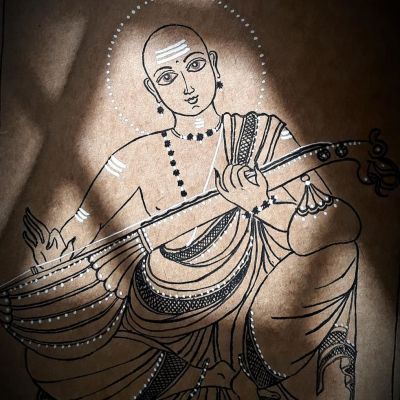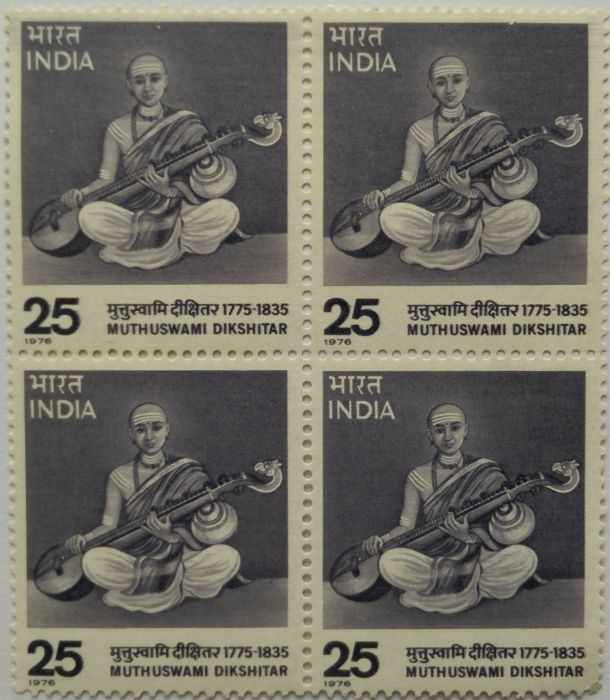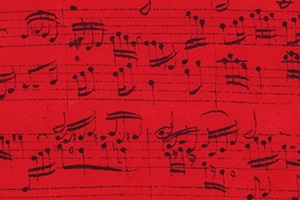Veena
Muthuswami Dikshitar: South Indian composer and poet who embellished Carnatic repertoire 200 years ago

Muthuswami Dikshitar
Muthuswami Dikshitar was the most influential Indian composer representing Carnatic tradition which is most present in the south of the country. His phenomenal poetic output shown in around 500 vocal compositions—written mainly in Sanskrit two hundred years ago—forms the basis of the repertoire of any Carnatic ensemble.
Dikshitar's songs show the impeccable unity of lyrics and music written in the broadest set of compositional methods with him not only using all 72 scales of Carnatic music but also implementing the harmonies of the Western classic. As a musician, he reached the top by playing Veena—India’s oldest string instrument first mentioned in the Rigveda dating back to 1500 BCE.
Muthuswami Dikshitar was born in 1775 in Tiruvarur into a family of rich musical traditions. At an early age, he began studies in the Vedas, poetry, music, and astrology, and very soon his talent was noticed by an aristocrat who gave Dishiktar an opportunity to settle at the Fort St. George, near Madras, where the boy learned aspects of Western musical theory and studied European instruments including the violin.
At the age of 24, he fell under the influence of the famous ascetic Chidambaranatha Yogi who, together with Dishiktar, settled in Varanasi in the north of India where he provided further education to Dishiktar in music, esoterics, philosophy, and yoga. Thus, Muthuswami Dikshitar received perhaps the widest musical education that included both Indian traditions of Hindustani and Carnatic supported by a solid knowledge of Western harmony.

After six years of studying in Varanasi, Dikshitar went on a pilgrimage by visiting the most important temples at Kanchi, Tiruvannamalai, Chidambaram, Tirupathi, and Kalahasthi where he invariably composed liturgy music, weaving into the narration the sacred meaning of the Hindu shrines.
Upon returning to his native Tiruvarur, he set as his goal to write music in all 72 Mēḷakarta ragas to revitalize Carnatic culture with a new melodic sense. It is believed that the violin received its place in Carnatic ensembles thanks to his efforts and his special slide technique on Veena brought together two musical traditions of India—Hindustani and Carnatic.
Given that Muthuswami Dikshitar introduced completely new melodic patterns to breathe new life into all scales of Indian classical music, it seems fair to draw the analogy with his great contemporary Beethoven who did the same Western classic—enriched music with a new syntax.
Muthuswami Dikshitar died in 1835 in Ettayapuram where a samadhi temple was erected in his honor, attracting thousands of musicians and fans of his creativity.
Listen to J.A.Jayanth's Carnatic flute variations on Muthuswamy Dikshithar's song Maha Ganapathim set in Nata raga:
Nata or Nattai raga is a pentatonic scale derived from the 36th raga Chalanata achieved by dropping two semitones. The scale contains all three music functions: tonic, dominant and subdominant; and it generally resembles the Western major scale since it contains a major third and a leading-tone to the tonic.

Possessing great improvisational potential, Nata raga is suitable for the very beginning of any performance.




Thank you very much for this short and sweet introduction to Sri Muthuswami Dikshithar. I also appreciate this novel idea of series of stories pertaining to our world of Sangeetham.
If I may, permit me to take the liberty of bringing to your attention that though it is true that the Veena is an instrument whose antiquity is beyond dating, the date you have given for the Rig Vedha as 1500 BCE. is incorrect and misleading. The Vedhas, in their true Nature, Meaning and Import, cannot be dated. They are as old as Time itself. But even supposing, for the sake of our mundane intelligence, we are constrained to fix a date on them, The Vedhas are spoken of by Sri Krishna in the Sri Bhagavad Geetha. Valmiki Maharishi records that Vasishta Maharishi invoked the wisdom of the Vedhas in the Yoga Vasishtam, a converstaion between Vasishtar and Sri Rama. There are many such occurences in our Ithihaasas and Puraanas, as well as many of the Shaasthras. Definitely, Sri Rama’sand Sri Krishna’s sojourn on this earth was before 1500 BCE?
We, of this very ancient Land of Bharatha, can and must choose to present our records without falling into the Occidental trap of archaeology, empirical science supported chronological evidence.
I am very humbled by your flattering review of these articles on Indian classical music. Realizing that my knowledge in this area is not too extensive and deep, I nevertheless decided to write this series of light articles in order to introduce this rich musical tradition to a new audience. Although I have traveled a lot in India, I still see your ancient culture from the outside and have to rely mainly on encyclopedic sources. So it will be great if you develop your point of view here, or you can write an article expanding on the subject and I will post it on the site on your behalf.